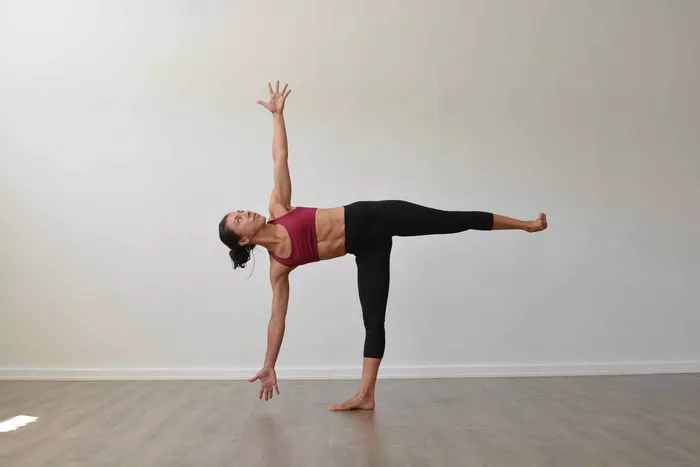Yoga and cardio are two popular forms of exercise. Each offers unique benefits and can contribute to overall health. Understanding these differences can help you choose the right practice for your goals.
Understanding Yoga and Cardio
Yoga is a mind-body practice. It combines physical postures, breathing techniques, and meditation. It promotes flexibility, balance, and relaxation. Many people use yoga to reduce stress and improve mental clarity. There are many styles of yoga, ranging from gentle Hatha to more vigorous Ashtanga or Vinyasa. Each style can provide a different experience.
Cardio, short for cardiovascular exercise, focuses on increasing your heart rate. It includes activities like running, cycling, and swimming. Cardio workouts are designed to improve heart and lung health. They burn calories and can help with weight management. This type of exercise is typically more intense than yoga. It can also lead to quick improvements in fitness levels.
Both practices have their place in a healthy lifestyle. However, your choice might depend on personal preferences and fitness goals. Some people enjoy the calm and focus of yoga. Others thrive on the energy and excitement of cardio workouts.
Benefits of Yoga
Yoga offers a wide range of physical and mental benefits. One of the main advantages is improved flexibility. Regular practice helps to stretch muscles and increase the range of motion in joints. This can lead to better overall mobility and reduced risk of injury.
In addition to physical benefits, yoga enhances mental well-being. It promotes mindfulness and self-awareness. Practicing yoga can help reduce anxiety and stress. Many people find that it improves their mood and overall outlook on life. This emotional benefit can be just as important as the physical aspects.
Moreover, yoga encourages deep breathing. This can lower heart rate and promote relaxation. Many styles of yoga also incorporate meditation. This combination can help to develop a sense of inner peace. Over time, these practices can lead to greater mental clarity and focus.
Yoga is also adaptable to all fitness levels. Beginners can start with gentle classes, while more experienced practitioners can explore advanced techniques. This inclusivity makes yoga accessible to a wide audience. It is an excellent choice for those looking to build strength and flexibility without high-impact movements.
Benefits of Cardio
Cardio exercise is essential for heart health. It strengthens the heart and lungs. Regular cardio can lower blood pressure and improve circulation. This leads to a reduced risk of heart disease. The benefits of cardio extend to weight management as well.
Engaging in cardiovascular activities burns calories quickly. This can help in losing or maintaining weight. Cardio exercises can be high or low intensity. Running and cycling are high-intensity options. Walking and swimming can be gentler on the body.
Another advantage of cardio is improved endurance. Over time, your stamina increases. This can make daily activities easier and more enjoyable. Cardio also releases endorphins, which are natural mood boosters. This can enhance feelings of happiness and well-being.
In addition to physical benefits, cardio promotes better sleep. Regular cardiovascular activity can help you fall asleep faster and improve sleep quality. This is crucial for overall health. It allows the body to recover and rejuvenate.
Yoga vs. Cardio: The Debate
Choosing between yoga and cardio often comes down to personal goals. If your primary aim is to reduce stress and improve flexibility, yoga might be the better choice. On the other hand, if your goal is to enhance cardiovascular health and lose weight, cardio may be more suitable.
Many fitness enthusiasts advocate for a balanced approach. Incorporating both yoga and cardio can provide the best of both worlds. This combination offers physical strength, flexibility, endurance, and mental clarity.
For those just starting their fitness journey, it may be wise to explore both practices. This allows for a better understanding of what each offers. It is essential to listen to your body and adjust your routine as needed.
The choice can also depend on lifestyle and schedule. Cardio workouts can be done in shorter, high-intensity sessions. Yoga classes may require more time for a complete session. Your daily routine may influence which practice fits better.
Considerations for Choosing
When deciding between yoga and cardio, consider your fitness level. Beginners may find yoga a more approachable option. It emphasizes proper alignment and gradual progression. Cardio, while beneficial, can be daunting for those new to exercise.
Injuries or health concerns should also factor into your choice. For those with joint issues or chronic pain, yoga may offer a safer option. It allows for gentle movement and can aid in rehabilitation.
Time commitment is another aspect to evaluate. If you have limited time, high-intensity cardio can provide quick results. Short bursts of cardio can be effective for busy schedules.
Finally, think about what you enjoy most. Exercise should be enjoyable to be sustainable. If you love the energy of a cardio class, stick with it. If you find peace in a yoga studio, prioritize that practice. Enjoyment plays a crucial role in maintaining a consistent routine.
See Also: Does Yoga Help Burn Belly Fat? Unraveling the Realities
Integrating Both Practices
Many fitness experts recommend integrating both yoga and cardio. This balanced approach can enhance overall health and well-being. Consider starting your week with a cardio workout to build endurance. Follow it with yoga sessions for recovery and flexibility.
Yoga can serve as a great complement to cardio routines. It helps to stretch and relax muscles after intense workouts. This can prevent soreness and enhance recovery. Including yoga can also improve performance in cardio activities. Better flexibility and balance can enhance overall movement efficiency.
A mixed routine can provide both physical and mental benefits. The combination helps to prevent burnout. It also keeps your workouts interesting and engaging. Try different classes and styles to find what resonates with you.
Creating a balanced fitness plan may involve scheduling sessions for both practices. Set aside specific days for cardio and others for yoga. This ensures you get the benefits of both without feeling overwhelmed.
Conclusion
Ultimately, the question of whether yoga or cardio is better depends on individual preferences and goals. Both practices offer valuable benefits. The best approach is to find a routine that you enjoy and can stick with over time.
Consider your fitness journey as a personal exploration. Each individual has unique needs and aspirations. By experimenting with both yoga and cardio, you can discover what works best for you. This exploration can lead to a fulfilling and balanced fitness lifestyle.
Whichever path you choose, remember that consistency is key. Regular practice in either yoga or cardio can lead to significant improvements in health and well-being. Embrace the journey and enjoy the process of becoming healthier and stronger.
You Might Be Interested In





















